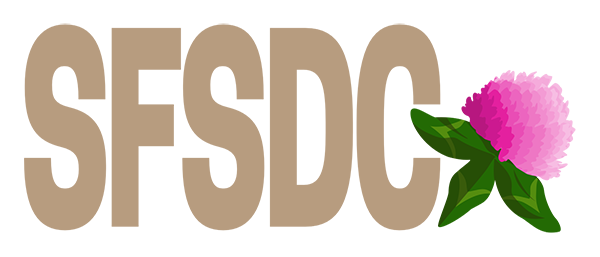2023 Forage Seed Year in Review
Authors: Clayton Myhre, DLF PICKSEED Agrologist and Dale Risula, Provincial Specialist, Specialty Crops Crops and Irrigation Branch, Ministry of Agriculture
The 2023 growing season in NE SK started off opposite of 2022. We had an exceptionally warm spring and no late spring frosts (Figure 1). This allowed the crop to develop quickly. The spring was so warm that the crop was estimated to be 7-10 days ahead of normal development by early July.
Moisture during the winter of 2022/23 ranged from 60-115% of normal (Figure 2), while spring moisture was mostly in the 60-85% of normal in much of the forage & turf seed growing area in NE SK (Figure 3).
Figure 1: Mean temperature difference from normal from May 16 to June 12, 2023, on the Prairies. Source: Agroclimate Interactive Map AAFC
Figure 2: Percent of average precipitation from November 1, 2022, to March 31, 2023, on the Prairies. Source: Agroclimate Interactive Map AAFC
Figure 3: Percent of average precipitation from April 1, 2023, to June 30, 2023, on the Prairies. Source: Agroclimate Interactive Map AAFC
Seed Yields
Temperatures in July/August during grass seed harvest were closer to normal compared to the very warm spring we had. We had lots of smoke from northern forest fires this summer, which may have helped cool the temperatures.
August rains led to a delayed grass seed harvest in some cases but was a blessing to help the new forage seed stands establish. Establishment success this year is better than the previous two dry years.
Harvest conditions in September for clover were ideal, with it being hot and dry. However, rain during October delayed red clover harvest well into the month in some cases.
Forage and turf seed yields varied a lot this year and were attributed to several factors, including moisture, insect pressure, age of the stand, and how well the stand was established the previous year.
Seed yields overall in 2023 were down from the above-average year in 2022. Seed quality is considered good.
Pests
Some of the dryer fields that received moisture later in the spring or early summer resulted in a flush of weeds that were not controlled because the herbicide had already been applied.
Disease levels were generally low except for bromegrass, which had high levels of ergot infection.
Lygus plant bugs seemed to be down in numbers in the clover this year compared to the high pressure we experienced the last two seasons. Lesser clover leaf weevil in red clover continues to be a pest in NE SK.
Insect pressure was high in the grasses this year, and we saw damage from all sorts of insects, including glassy cutworm (Figure 4). Growers are advised to scout their fields in late April and early May for sod webworm activity.
Crops were also damaged by the true armyworm (Figures 5, 6), European skipper, rice leaf bug, leaf hopper, and grasshopper.
For more information:
true armyworm, Mythimna unipuncta (Haworth) also referred to as armyworm cutworm, or rice armyworm, refer to page 36 Cutworm Pests of Crops on the Canadian Prairies
Figure 4: Glassy cutworm damage to a timothy seed production field, NE-SK, 2023. Source: Clayton Myhre.
Figure 5: True armyworm larvae, meadow fescue seed crop, NE-SK, July 2023. Source: SFSDC.
Figure 6: True armyworm damage to a tall fescue seed production field, NE-SK, 2023. Source: Clayton Myhre.
Pedigreed seed production
Inspected pedigreed acreage of forage and turf seed in Canada in 2023 is based on Canadian Seed Growers Association (CSGA) data.
The standards, Circular 6, are available on the CSGA website Circular 6 Canadian Regulations and Procedures for Pedigreed Seed Crop Production
Inspected pedigreed acreage of forage and turf grass seed (excluding alfalfa) in Canada in 2023 was up 9% from 2022 and 1% below the 7-year average acreage (Table 1).
Inspected acreage of forage and turf seed production were up in all regions (Table 2). Western Canada produced 100% of Canadian pedigreed seed for all forage and turf seed crops except alfalfa (not reported in the tables below).
Saskatchewan pedigreed seed production was up slightly in 2023 in terms of acres because of a fairly large increase in wheatgrass - up 51%, ryegrass up 45% and trefoil up 35%, offsetting the 14% decrease in bromegrass acres and 12% decrease in clover acres (Table 3).
Crested wheatgrass pedigreed seed production field with pollen cloud (center back of photo just above the crop canopy), NE-SK, June 2023.










